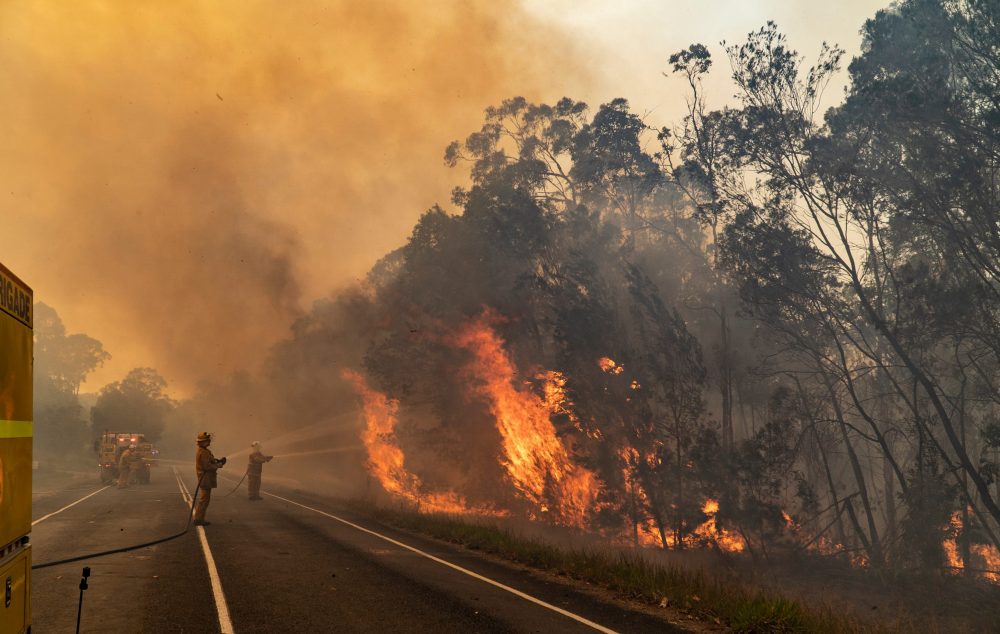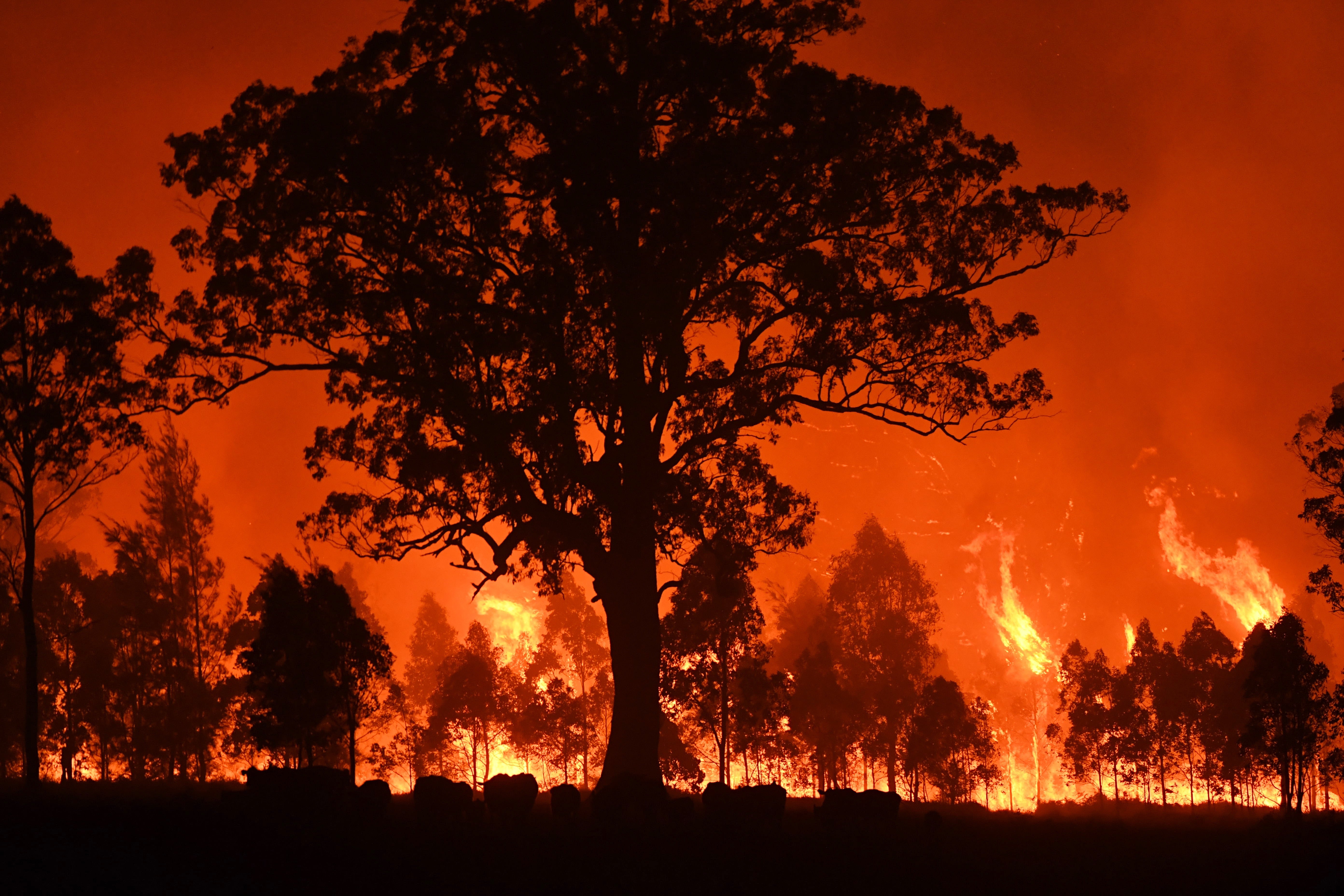Planning for Security: Establishing an Efficient Bushfire Management Plan
Planning for Security: Establishing an Efficient Bushfire Management Plan
Blog Article
Ideal Practices in Bushfire Monitoring for Comprehensive Fire Defense
In the realm of bushfire monitoring, the mission for comprehensive fire defense requires a precise approach that incorporates different crucial elements. As we navigate via the nuances of these best methods, an exploration right into the detailed internet of techniques and techniques waits for, promising a deeper understanding of the diverse landscape of bushfire monitoring for detailed fire security.
Danger Assessment and Planning
In bushfire management for fire security, the first step includes conducting a thorough danger analysis and developing a comprehensive strategy to minimize potential dangers. Risk evaluation is a critical process that entails recognizing, evaluating, and examining prospective dangers that can result in a bushfire. This evaluation takes into consideration various elements such as climate condition, topography, fuel load, and human activities in the location. By understanding these dangers, fire security authorities can focus on locations that are most at risk to bushfires and allocate resources successfully.
By having a well-defined strategy in location, emergency situation services can act promptly and efficiently to shield lives, home, and the environment throughout a bushfire outbreak. Efficient threat assessment and preparation are fundamental elements of bushfire monitoring for guaranteeing thorough fire security.
Vegetation Management Methods
After conducting a detailed risk evaluation and creating an extensive strategy for bushfire monitoring, the focus moves to applying effective plants monitoring methods. Plant life monitoring plays an essential duty in minimizing the strength and spread of bushfires. One key technique is producing defensible room around properties by clearing combustible greenery and preserving a secure range in between plant life and structures. This helps to create a buffer zone that can slow the development of a fire and provide a much safer atmosphere for firemens to protect residential properties.
In enhancement to creating defensible room, prescribed burning is an additional vital plants administration technique. Prescribed burns entail purposely setting fires under controlled problems to minimize the build-up of gas, reduce the probability of high-intensity wildfires, and promote community health. By purposefully shedding areas with excess plant life, gas levels are lowered, making it harder for fires to spread rapidly and frantically.

Community Engagement and Education
Reliable neighborhood interaction and education are important components in building a resilient and aggressive method to bushfire management. By involving area participants in the planning and execution of bushfire management strategies, stakeholders come to be active participants in guarding their communities and homes. Community involvement promotes a sense of common obligation and empowers homeowners to take ownership of their safety.
Education plays an important role in outfitting individuals with the knowledge and abilities needed to minimize bushfire dangers effectively. Giving academic sources ablaze avoidance, evacuation treatments, and the importance of very early detection can dramatically improve area preparedness. In addition, informing residents on the regional bushfire setting, including fire behavior and threat elements, allows them to make informed decisions throughout high-risk circumstances.
Through continuous involvement and education efforts, areas can create a collective understanding of bushfire dangers and job collaboratively to minimize the influence of wildfires. By fostering a culture of preparedness and strength, area members can enhance their capability to react properly to bushfire emergencies and safeguard both lives and residential property.

Early Discovery and Warning Equipments
Neighborhood engagement and education and learning serve as fundamental pillars in developing positive bushfire monitoring methods, preparing for the application of robust early discovery and caution systems. Early detection and caution systems are important parts in alleviating the impact of bushfires on neighborhoods and the setting. These systems include a variety of techniques and modern technologies focused on determining and signaling authorities and homeowners to prospective fire episodes quickly and successfully.
One secret component of very early detection systems is making use of innovative monitoring innovations such as satellite images, drones, and climate stations to find indicators of potential fire ignition. These modern technologies offer real-time information that can be assessed to identify fire-prone areas and set off very early cautions. In addition, the integration of community-based monitoring networks and automated alert systems can improve the performance of very early discovery initiatives by entailing homeowners in reporting prospective fire dangers and obtaining prompt cautions.
Reliable very early discovery and caution systems depend on a multi-faceted approach that integrates technological development, neighborhood participation, and quick emergency situation action procedures to make sure the timely and coordinated management of bushfire events. By investing in these systems and fostering collaboration between stakeholders, areas can boost their strength to bushfires and decrease the affiliated threats.
Emergency Response and Discharge Plans
A well-coordinated and comprehensive emergency situation action and evacuation strategy is necessary for successfully protecting lives and residential or commercial property throughout bushfire occurrences. These plans must be carefully crafted, taking into account aspects such as the topography of the location, the density of plant life, and the possible speed and instructions of the fire's spread.
One important aspect of an emergency situation reaction strategy is the establishment of clear interaction channels to share precise and prompt info to citizens and emergency -responders. This can consist of using alarms, mobile notifies, social media sites, and neighborhood conferences to guarantee that every person is informed and understands what activities to take.
Evacuation paths must be pre-identified and on a regular basis maintained to ensure they come during emergencies. In addition, designated evacuation facilities must be developed to offer shelter, medical support, and support solutions to evacuees.
Regular drills and exercises are vital to familiarize homeowners with evacuation procedures and check the performance of the plan. By continuously upgrading and reviewing emergency action and discharge strategies, areas can enhance their readiness and resilience when faced with bushfire dangers.
Verdict
Finally, effective bushfire management calls for a comprehensive approach that includes risk assessment, greenery administration, neighborhood interaction, early detection systems, and emergency reaction plans. By executing these best practices, communities can better protect themselves from the terrible impacts of bushfires - BAL Report. It is necessary to focus on proactive actions to reduce the dangers positioned by bushfires and make certain the safety and health of people and areas in jeopardy
After carrying out a detailed danger evaluation and developing a comprehensive strategy for bushfire monitoring, the focus changes to implementing reliable plant life management strategies.Effective area interaction and education are essential parts in developing Bushfire Management Plan a resilient and aggressive technique to bushfire management. By entailing area members in the preparation and application of bushfire management approaches, stakeholders end up being energetic participants in guarding their homes and communities.Neighborhood engagement and education and learning serve as foundational columns in establishing aggressive bushfire management techniques, laying the groundwork for the application of robust very early detection and caution systems.In conclusion, efficient bushfire management needs a thorough method that consists of risk evaluation, plant life management, neighborhood involvement, early discovery systems, and emergency situation response plans.
Report this page